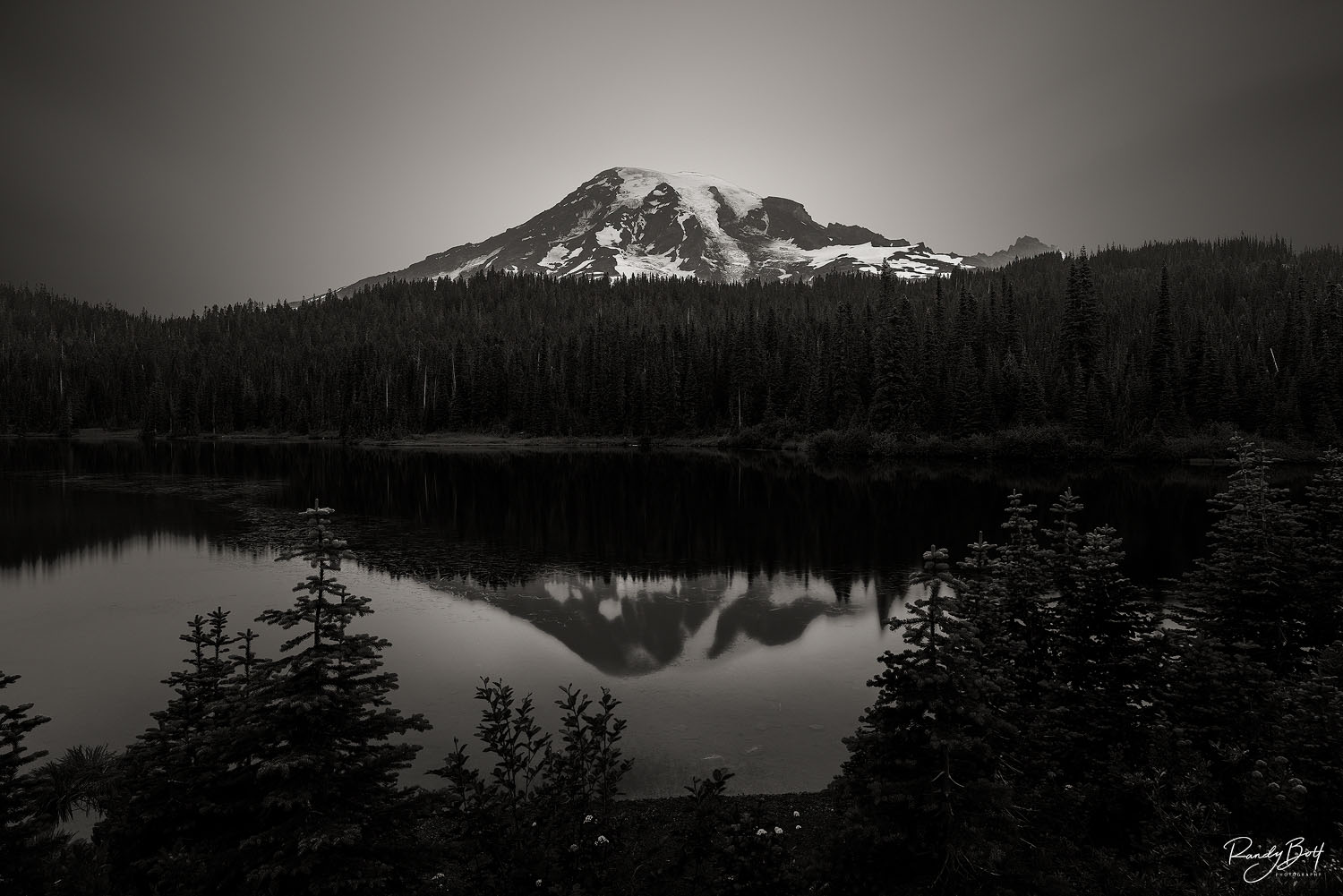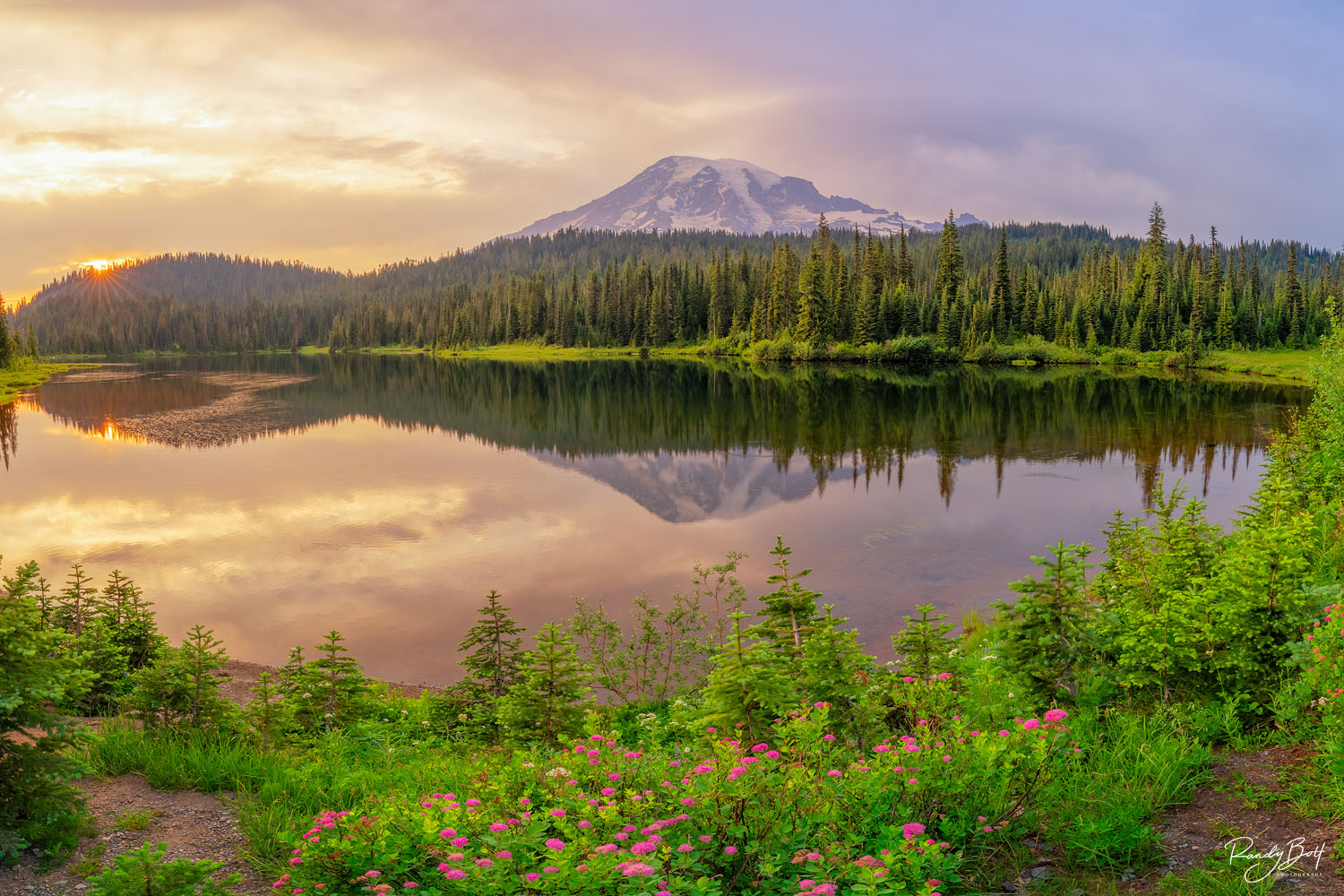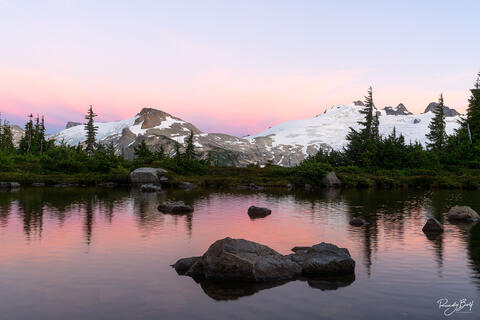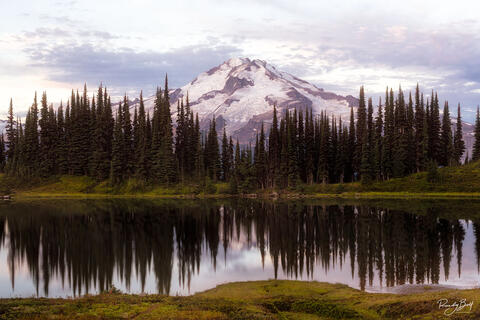Best Landscape Photography Locations in Mount Rainier National Park
Mount Rainier National Park, located in Washington state, is a premier destination for nature enthusiasts and photographers. The park, dominated by the iconic Mount Rainier, offers an array of breathtaking landscapes, diverse ecosystems, and picturesque vistas. With its towering peaks, lush forests, vibrant wildflower meadows, and serene lakes, Mount Rainier is a paradise for photographers looking to capture the natural beauty of the Pacific Northwest. In this blog post, we will explore some of the best locations for mount rainier photography, providing you with insights and tips to make the most of your photographic journey.
Iconic Sunrise and Sunset Spots
Sunrise at Sunrise Visitor Center
The Sunrise Visitor Center, aptly named, is one of the highest points in Mount Rainier National Park that is accessible by car, standing at an elevation of 6,400 feet. As the first rays of sunlight hit the park, the area around the visitor center is bathed in a warm, golden glow, creating a magical scene for photographers. The panoramic views of Mount Rainier from this vantage point are simply unparalleled. To make the most of your mount rainier photography, arrive early to set up your gear and capture the golden light as it illuminates the mountain’s glaciers and meadows.
Reflection Lakes
Reflection Lakes is another iconic spot for photographers, particularly at sunset. The still waters of the lakes perfectly mirror the towering peak of Mount Rainier, creating a stunningly symmetrical and serene image. As the sun sets, the sky often transforms into a vibrant canvas of pinks, purples, and oranges, providing a breathtaking backdrop for your photos. Arrive well before sunset to scout the best composition and take advantage of the changing light. The reflection of the mountain in the lake adds an extra layer of beauty to your mount rainier photography.
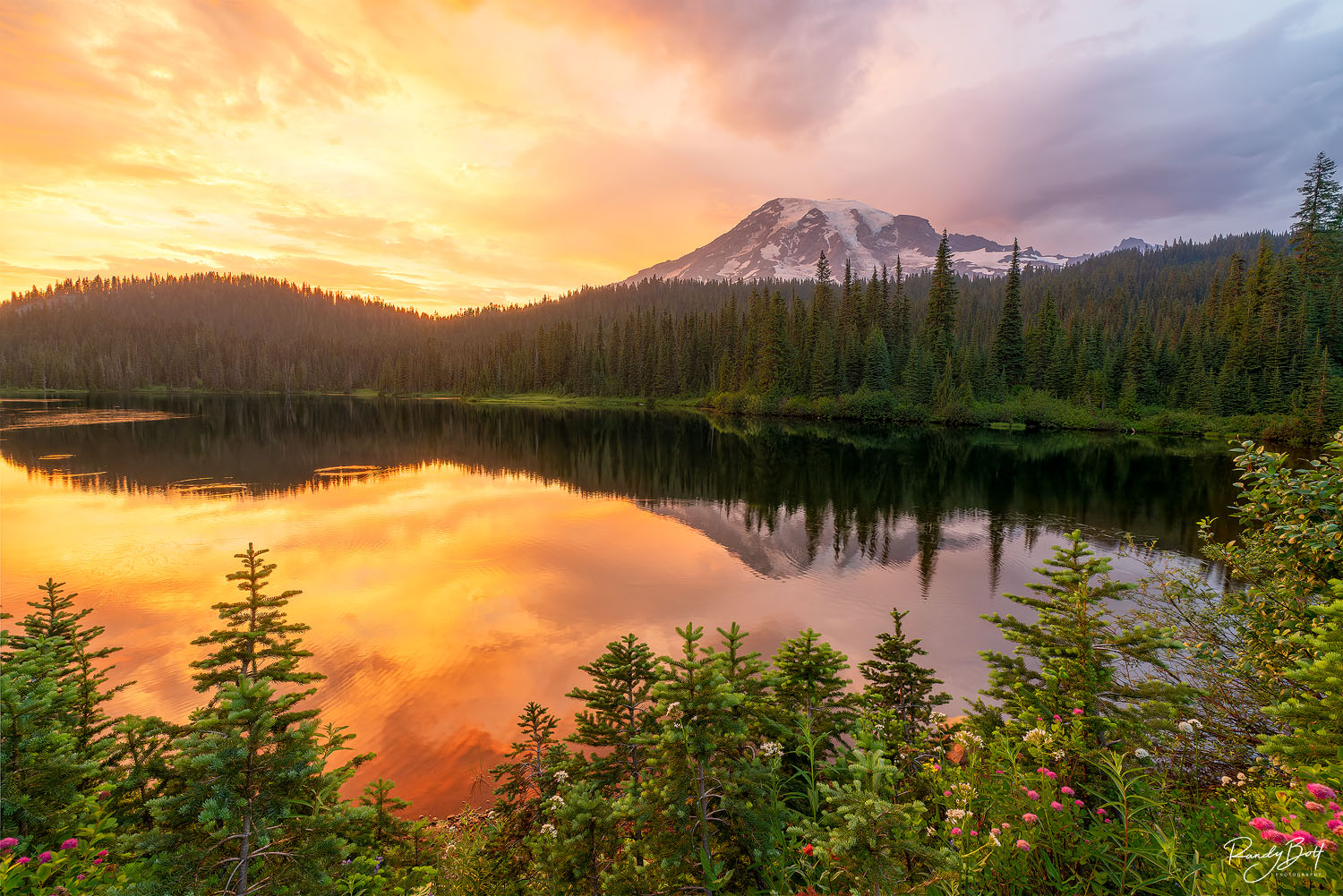
Mount Rainier putting on a light show at sunset. The clouds finally rolled in just before sunset and created some amazing color. At 14,410 feet, Mount Rainier is the most glaciated mountain in the lower 48 states and creates 5 major rivers. During wildflower season Mount Rainier is one of the best locations in the Pacific Northwest. Sprawling fields of flowers shadowed by the glaciated peak should be on everyone's bucket list. While many aspects of landscape photography are based on skill, light like this is all about luck. Limited edition print from the Mountains gallery.
Vibrant Wildflower Meadows
Paradise Meadows
Paradise Meadows is one of the most famous areas in Mount Rainier National Park, renowned for its vibrant wildflower displays. During the summer months, the meadows come alive with a riot of colors, featuring lupines, paintbrushes, and avalanche lilies. The combination of wildflowers with the imposing presence of Mount Rainier in the background makes for a quintessential mount rainier photography experience. Early morning or late afternoon light will enhance the colors and shadows in your shots, making the flowers appear even more vibrant.
Tipsoo Lake
Located near the park’s northeastern entrance, Tipsoo Lake offers a spectacular setting for capturing wildflowers. The lake is surrounded by rolling meadows that burst into bloom each summer, reflecting the majestic Mount Rainier in its waters. Photographers can take advantage of the well-maintained trails around the lake to find different perspectives and compositions. Sunrise and sunset provide particularly enchanting lighting conditions here, adding a golden or pinkish hue to your photos that complements the colorful wildflowers.
Spray Park
Spray Park, located in the northwestern part of the park, is another excellent spot for wildflower photography. This area is known for its expansive meadows filled with wildflowers and stunning views of Mount Rainier. The hike to Spray Park is moderately challenging but rewards photographers with breathtaking scenes of colorful flowers set against the backdrop of the towering mountain. The best time to visit is during the peak wildflower season, typically from mid-July to early August.
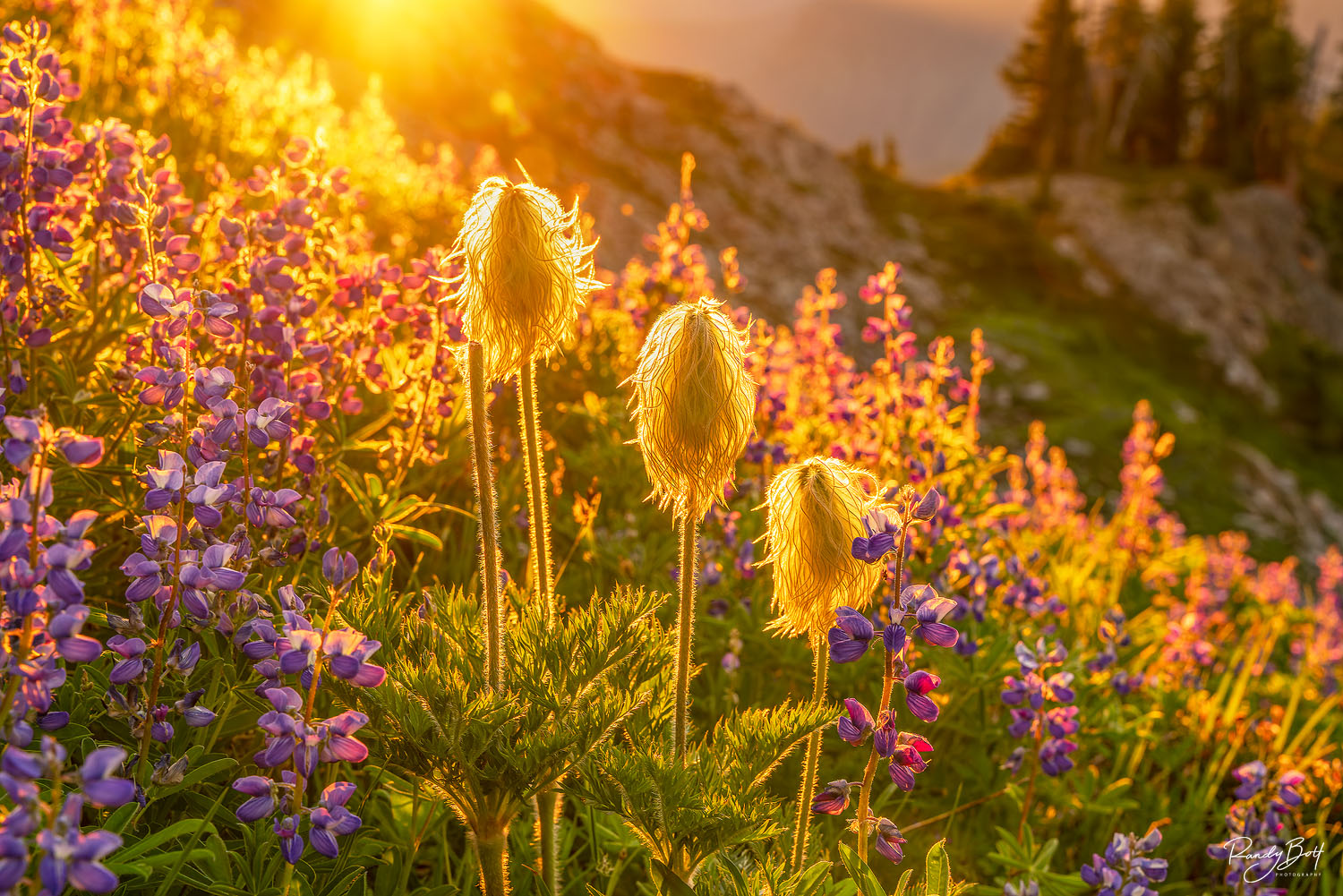
Western Anemones, scientifically classified as Anemone occidentalis, grace us with their presence in the rich tapestry of North American flora. Flourishing in diverse ecosystems, these botanical marvels display a remarkable adaptability, thriving in alpine meadows, woodlands, and even rocky terrains. Western Anemones find their sanctuary in alpine meadows, where the air is crisp, and the scenery breathes life into their delicate petals. These high-altitude habitats provide a canvas for nature's artistry, adorned with a tapestry of blossoms that form a breathtaking spectacle. Limited edition print from the Landscape gallery.
Majestic Waterfalls and Rivers
Christine Falls
Christine Falls is one of the most picturesque waterfalls in Mount Rainier National Park. Framed by a charming stone bridge, the falls drop gracefully into a pool below, creating a perfect setting for mount rainier photography. This spot is easily accessible from the road, making it a convenient stop for photographers. To capture the beauty of the falls, consider using a slow shutter speed to create a silky, smooth effect on the water. The surrounding lush greenery adds a touch of contrast and depth to your photos.
Narada Falls
Narada Falls is another must-see waterfall, located just a short hike from the parking area. This powerful 168-foot waterfall plunges dramatically into a misty gorge, creating a captivating scene for photographers. There are multiple vantage points along the trail that provide unique views of the falls, allowing you to experiment with different compositions. The sound of the rushing water and the cool mist in the air add to the immersive experience of photographing this natural wonder. Mount rainier photography enthusiasts will find Narada Falls to be a rewarding subject.
Myrtle Falls
Myrtle Falls, located in the Paradise area, is one of the most photographed waterfalls in the park. The falls are easily accessible via a short, paved trail, making it a popular spot for visitors. The 72-foot waterfall cascades down a rocky cliff, with Mount Rainier prominently visible in the background. This iconic view makes for a stunning photograph, especially during sunrise or sunset when the lighting is soft and warm. The combination of the waterfall and the mountain creates a quintessential mount rainier photography opportunity.
Rugged Alpine Landscapes
Skyline Trail
For those willing to venture further, the Skyline Trail offers some of the most breathtaking alpine scenery in the park. This trail takes you high into the subalpine zone, where you’ll find sweeping views of Mount Rainier, glaciers, and distant peaks. The trail is moderately challenging but rewards hikers with numerous photographic opportunities, from rugged rock formations to pristine snowfields. The dynamic landscape and ever-changing weather conditions make this an exciting location for mount rainier photography. Be prepared for rapidly changing weather and carry appropriate gear.
Fremont Lookout
Fremont Lookout, situated near the Sunrise area, provides an incredible vantage point for capturing the vastness of Mount Rainier National Park. The lookout is perched at 7,200 feet, offering panoramic views that extend to the Cascade Range and beyond. The hike to Fremont Lookout is relatively moderate, making it accessible to most visitors. The lookout itself is a historic fire lookout tower, adding an interesting element to your compositions. Sunset and sunrise are particularly striking times to visit, as the light casts dramatic shadows across the landscape, enhancing your mount rainier photography.
Burroughs Mountain
Burroughs Mountain is another fantastic location for photographing alpine landscapes. The trail to Burroughs Mountain takes you through a stark, rocky terrain that offers sweeping views of Mount Rainier and the surrounding valleys. The higher elevation provides a unique perspective of the mountain, with glaciers and rugged peaks in the foreground. The best time to visit is during the summer months when the trail is snow-free, and the weather is relatively mild. The stark, otherworldly landscape makes for dramatic and compelling mount rainier photography.
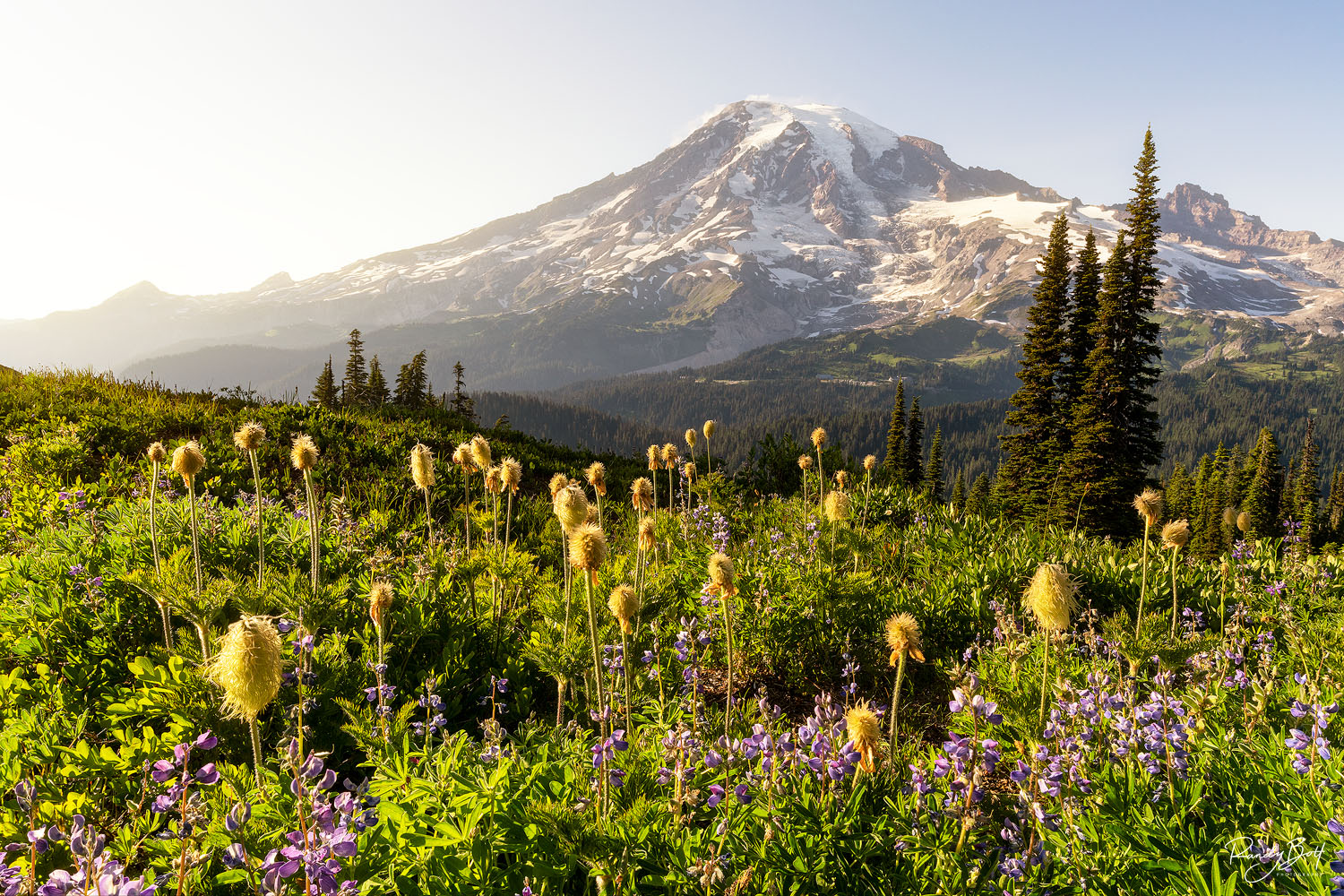
Sunset in the fields of wildflowers at Mount Rainier National Park. The wildfire smoke create a soft glow on the mountain as the sunset. The Western Anenome and Lupine are in full bloom in late July making Mount Rainier National Park come to life with color. Limited edition print from the Mountains gallery.
Conclusion
Mount Rainier National Park is a treasure trove of photographic opportunities, offering a diverse range of landscapes and subjects for photographers of all levels. From the iconic sunrises at Sunrise Visitor Center to the tranquil reflections at Reflection Lakes, the vibrant wildflower meadows, and the majestic waterfalls, there is no shortage of inspiring scenes for mount rainier photography. Whether you’re capturing the rugged alpine landscapes of the Skyline Trail or the diverse wildlife of the Ohanapecosh River, each location presents unique opportunities to create memorable images.
As you plan your next photography adventure to Mount Rainier, remember to respect the natural environment and follow Leave No Trace principles to preserve these beautiful landscapes for future generations.
